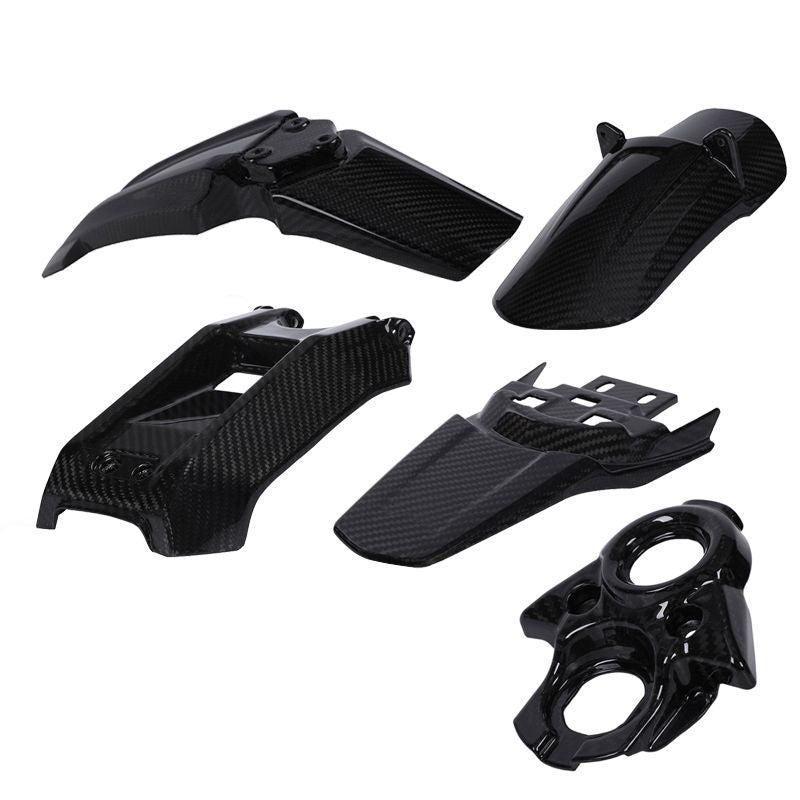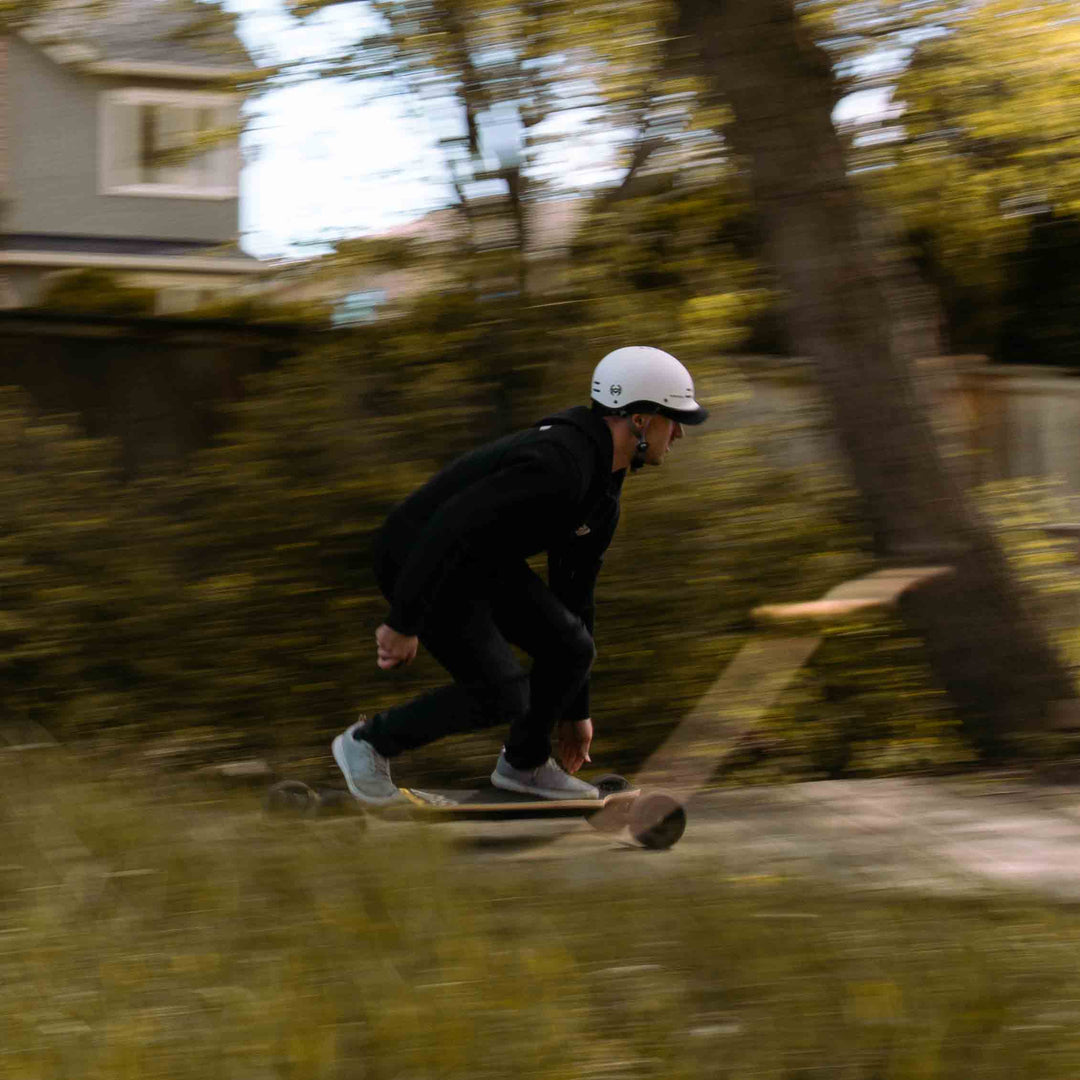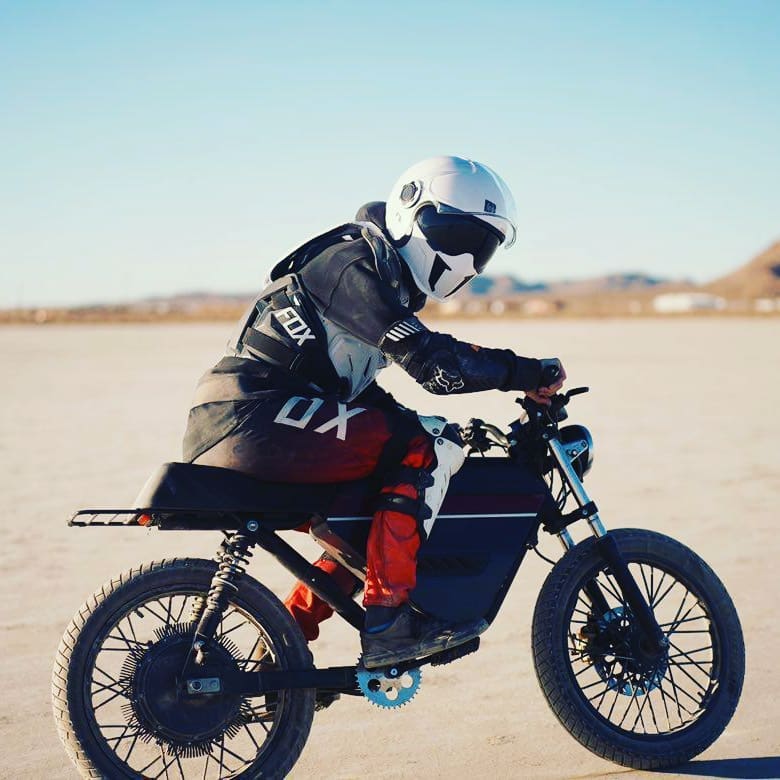TQ-1 protective gear (Shell: Impact resistant combination of carbon fiber and polyvinyl chloride)
Knee and Elbow pads are very important.
Today we will talk a little about the components of our TQ-1 Pads. The outer layers of the pads are made out of polyvinyl chloride and carbonfiber. These components are popular in the electric skateboarding industry and so are in our protective gear.
Advantages of PVC:
Polyvinyl chloride is a polar non-crystalline polymer, density is: 1.38 g/cm3, glass transition temperature: 87°C, so it has poor thermal stability and is difficult to process. It can not be used directly, it must be modified and compounded, and relevant additives and fillers can be added before it can be used. However, due to the different types and fractions of related additives and fillers added, this determines that the properties and requirements of the prepared PVC materials are different. We usually call it PVC formula, strictly speaking, it is PVC modified formula, and PVC can only be used after modification. This category is often classified as polymer modified materials.
Density: 1380 kg/m3
Young's modulus of elasticity (E): 2900-3400 MPa
Tensile strength (σt): 50-80 MPa
Elongation at break: 20-40%
Melting point: 212°C
Softening temperature: 85℃
Thermal conductivity (λ): 0.16 W/(m•K)
Coefficient of thermal expansion (α): 8×10-5 /K
Heat capacity (c): 0.9 kJ/(kg•K)
Disadvantages of PVC:
Long-term exposure to ultraviolet rays is easy to age and reduce the fracture resistance; the hardness is not high enough, the corrosion resistance is not high enough, and the aesthetics is not enough.
Most of these disadvantages of PVC are highly improved in our design by being underneath the carbonfiber.
Advantages of carbon fiber:
Carbon fiber is a high-strength, high-modulus fiber with a carbon content of more than 90%. High temperature resistance ranks first among all chemical fibers. It is made of acrylic fiber and viscose fiber as raw materials, which are oxidized and carbonized at high temperature. It is an excellent material for manufacturing high-tech equipment such as aerospace and aviation. It has the characteristics of high temperature resistance, friction resistance, electrical conductivity, thermal conductivity and corrosion resistance. The appearance is fibrous, soft, and can be processed into various fabrics. Because of its graphite microcrystalline structure along the fiber axis Preferential orientation, so it has high strength and modulus along the fiber axis direction. Carbon fiber has a low density, so its specific strength and specific modulus are high. The main purpose of carbon fiber is to compound with resin, metal, ceramics and carbon as a reinforcing material to make advanced composite materials. Carbon fiber reinforced epoxy resin composites have the highest specific strength and specific modulus among existing engineering materials.
Its specific gravity is less than 1/4 of steel. The tensile strength of carbon fiber resin composites is generally above 3500Mpa, which is 7-9 times that of steel. The tensile modulus of elasticity is 23000-43000Mpa, which is also higher than steel. The ratio of the strength of the material to its density can reach more than 2000Mpa/(g/cm3), while the specific strength of A3 steel is only about 59Mpa/(g/cm3), and its specific modulus is also higher than that of steel. Every time the weight of the spacecraft is reduced One kilogram can lighten the launch vehicle by 500 kilograms. Therefore, in the aerospace industry, there is a rush to adopt advanced composite materials. There is a vertical take-off and landing fighter whose carbon fiber composite material has accounted for 1/4 of the weight of the aircraft and 1/3 of the weight of the wing. According to reports, the key components of the three rocket thrusters on the US space shuttle and the advanced MX missile launch tube are all made of advanced carbon fiber composite materials.
By incorporating such mindset to our protective gear our riders can ride for longer with less fatigue. Nobleman designs all of our protective equipment with lots of thought. Weight savings, aesthetics, functionality, and much more go in design. The better our protective equipment is the better our riders can ride.
Disadvantages of carbon fiber:
Carbon fiber is used in the field of protection. After continuous testing by NOBLEMAN, the only disadvantage is that it has high mechanical strength, but it has poor tensile strength (toughness). It is easy to crack when hit by high-speed sharp objects, which poses a certain safety hazard.
The combination of polyvinyl chloride and carbon fiber can make up for the shortcomings of the two materials, increase the tensile resistance of carbon fiber, improve the impact resistance of polyvinyl chloride, reduce weight, resist ultraviolet aging, and improve aesthetics.




